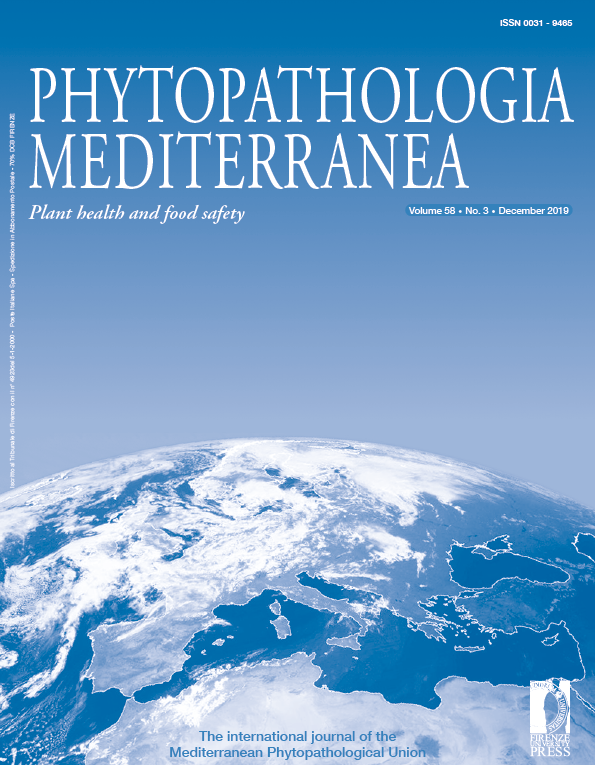Resistance of wild barley (Hordeum spontaneum) and barley landraces to leaf stripe (Drechslera graminea)
Published 2019-12-30
Keywords
- Disease resistance,
- Pyrenophora graminea,
- Hordeum vulgare
How to Cite
Abstract
Wild barley (Hordeum spontaneum) and barley landraces are important sources of genetic variation for disease resistance. Thirty wild barley (H. spontaneum) genotypes and 30 barley landraces were evaluated for susceptibility to two Drechslera graminea isolates. Virulence differences were observed between the isolates, while the responses of the host genotypes to the isolates also varied. Of the H. spontaneum genotypes, 23% and 63%, respectively, were resistant to the Yozgat D. graminea isolate, and Eskişehir D. graminea isolates. On the other hand, 43% and 90% of the barley landraces were resistant to Yozgat and Eskişehir D. graminea isolates, respectively. Hordeum spontaneum genotypes 13, 24, 27, 29, 54, 86, and 91 exhibited resistance to both D. graminea isolates, while genotypes 14 and 32 showed intermediate reactions to the Yozgat isolate and resistant reactions to the Eskişehir isolate. Barley landraces 21, 37, 38, 39, 40, 73, 98, 128, 139, 153, 159,167, and 171 showed resistant reactions, and barley landrace 8 showed an intermediate reaction to both isolates. Barley landraces 3, 20, 24, 71, 101, 103, 104 and 160 exhibited intermediate responses to the Yozgat isolate and a resistant response to the Eskişehir isolate. Using resistant barley genotypes would reduce the need for pesticides for control of leaf stripe, and be an environmentally preferred strategy for disease control. The disease resistance present in wild barley and barley landraces are important for expanding the genetic basis of cultivated barley (H. vulgare). The resistant and intermediate genotypes identified in this study could be used as resistance sources in barley breeding, or landraces could be used directly for commercial barley production.






